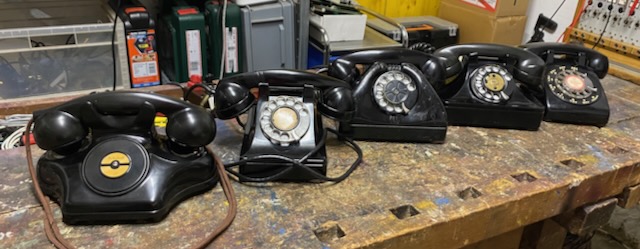
In the early 40ies Telephone TP-6 was the designation for a couple of commercial desktop telephones used by the US Signal Corps. This included standard black bakelite desktop combined sets from all major US suppliers: Western Electric 302, Automatic Electric 40, Kellog 925, Stromberg Carlson 1212 (Later also 1222, 1242), North Electric H4 (later H6) [1] [3]. Some of them had assigned an official nomenclature: AE 40 - TA-101/FTC; Kellogg 925 - TA-102/FTC; SC 1222 - TA-113/FTC [3]. On all sets the Signal Corps used a standardised Dial TA-45(*)/GT [3].
By the end of WWII a standardised TP-6-A was introduced which was provisioned by Western Electric, Connecticut Telephone and Electric and North Electric. The base board, ringer, coil and capacitor were of WE 302 type (although the capacitor was specific to the TP-6-A). The shell and handset were manufacturing company specific, Western Electric and North Electric used there respective 302 and H6 type shells, Connecticut Telephone and Electric used a shell and handset only used for their TP-6-A (probably they did not mfg. any other desktop telephones at that time). All sets used the standardised Dial TA-45(*)/GT [3] and the same western electric type HA1 receiver and F1 transmitter capsules.
The dial TA-45(*)/GT was provisioned as TA-45/GT by Automatic Electric and Telephonics (using the AE setup) and as TA-45B/GT with a setup similar to a BTMC dial (with impulse wheel) [3]. TA-45B/GT may have been provisioned by different manufactures. In my North set of 1951 there is a TA-45C/GT mounted which uses the AE dial setup.
All TP-6-A where M.F.P. treated (Moisture- and fungiproofed) [3].
A more modern telephone set TA-236/FT based on the Western Electric 500 was introduced by the 50ies [3]. This set is more efficient and has a better frequency range than the earlier TP-6 type sets. It uses all the same components than a civil WE 500 set. Although in the 70ies the WE 2500 based touch tone set TA-938G was introduced [4] the TA-236/FT set is in use up to the 90ies [5].
All types, from the TP-6 to the TP-6-A and the TA-236/FT were also used as "manual" sets with a "dial blank" cover.
TP-6 use metal or bakelite shells, the same as their civilian "originals". Early TP-6-A seem to be of metal and later (1950+) of plastic. The Connecticut Telephone and Electric shell seems to be always of metal. TA-236/FT and TA-938G are of plastic.
From left to right:
TA-102/FTC (Kellog Masterphone 925, 1945),
TP-6-A (Western Electric, 1945),
TP-6-A (Connecticut T&E, 1948),
TP-6-A (North Electric, 1951),
TA-236/FT (Western Electric, 1966)

Open, ringer mounted to base plate, rest mounted inside bakelite shell.
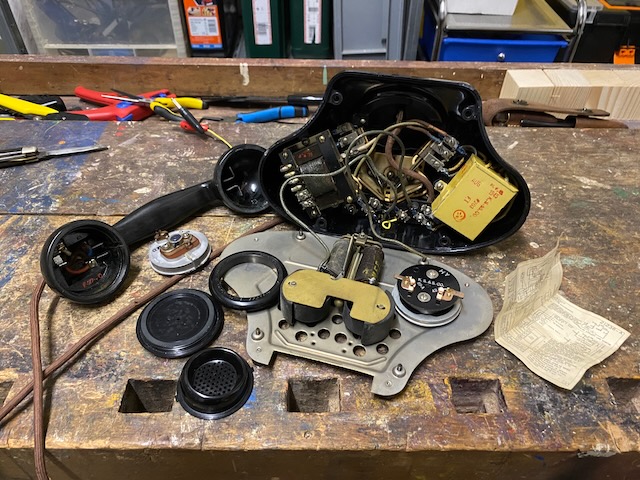
The capacitor with M.F.P. treatment stamp (Moisture- and fungiproofing).
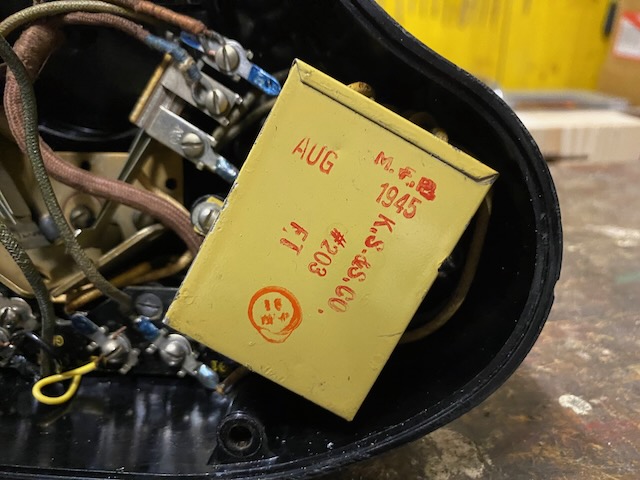
The handset is a Kellogg specific design, using Kellogg specific RX and TX capsules which clamp to the contacts.
The "F-27-C" in the mouthpiece side is the Kellogg handset part number [0].
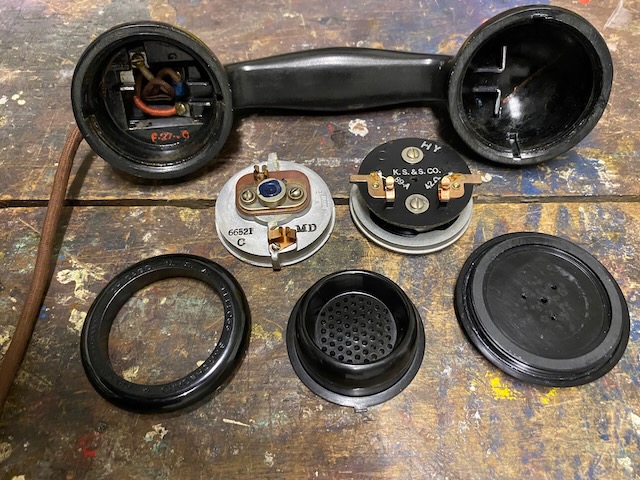
Capsules clamped in.
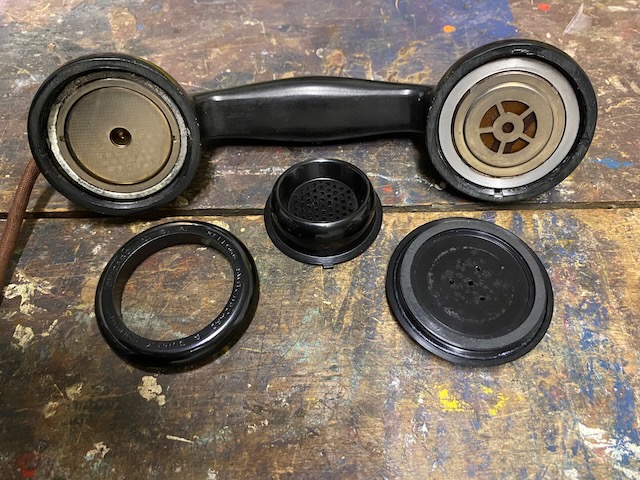
The manufacturer name on the mouthpiece ring (Kellogg Switchboard and Suppl. Company Chicago, U.S.A).
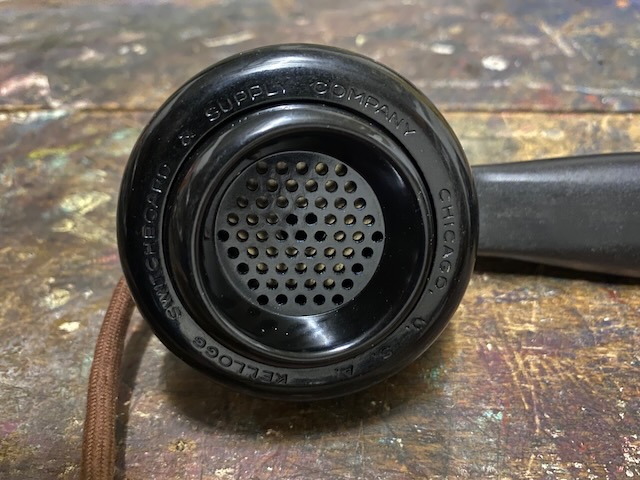
Wiring diagram.
Kellogg called it's implementation of anti-sidetone circuit the "Triad circuit" [0].
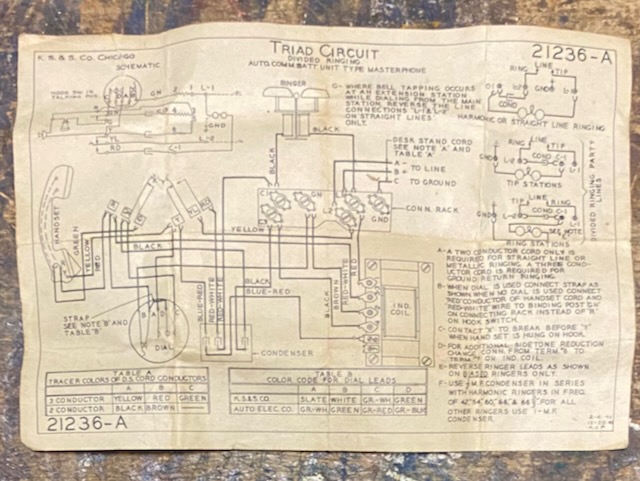
The "Masterphone", also called "Ashtray" because of the moulds in the case.
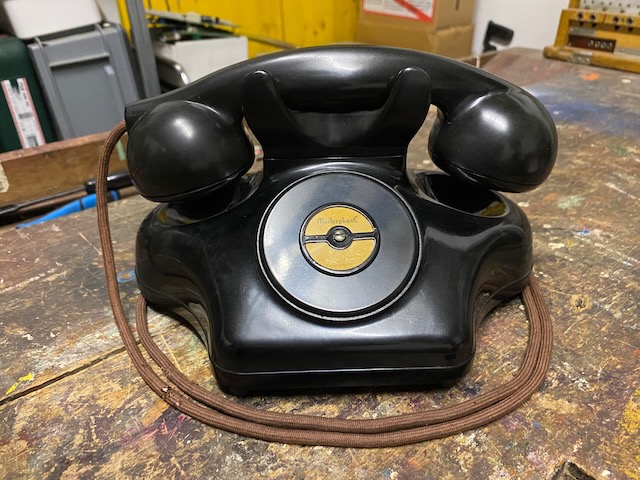
From the back.
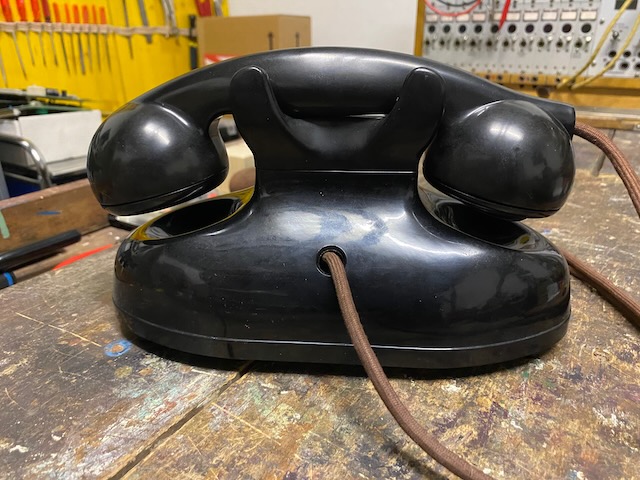
Bottom.
Par No. 925-BAX is the part number for the standard common battery set [0].
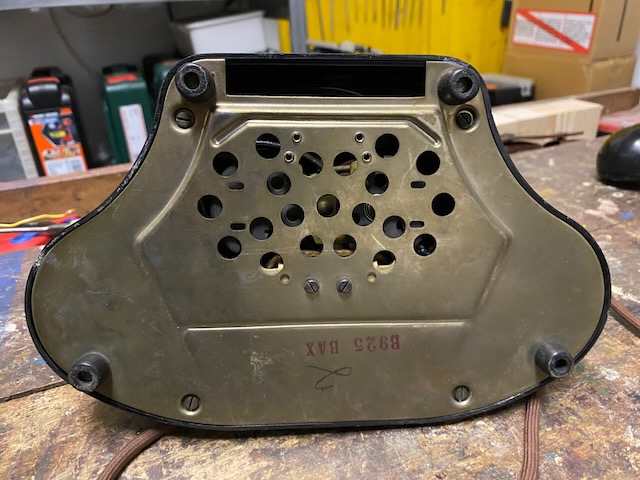
From left to right: Western 1945, Connecticut 1948, another Connecticut 1951, North 1951.
All TP-6-A used identical bases and identical components independent of the manufacturer and the top respective shell.
The base plates would be interchangeable between all TP-6-A.
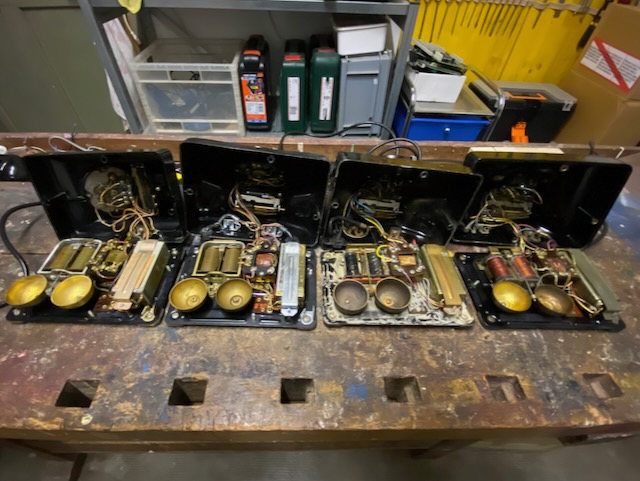
The Western Electric 1945 TP-6-A open.
The shell of this one is made of a zinc alloy cast.
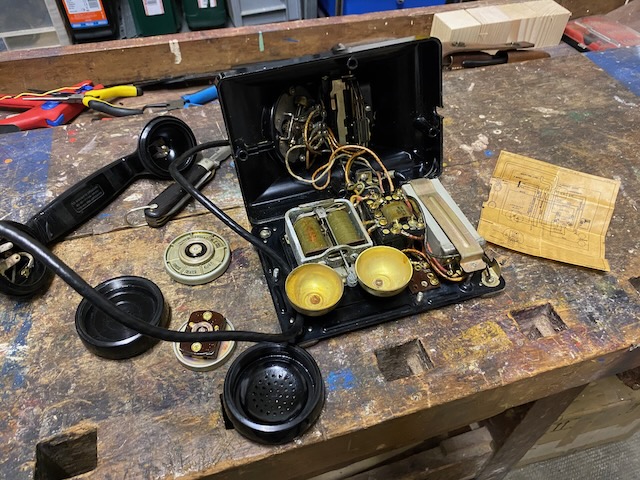
Instead of a WE dial also the WE made TP-6-A use a AE type dial.
On this one there are no markings to be found, perhaps they were stamped and "washed" off.
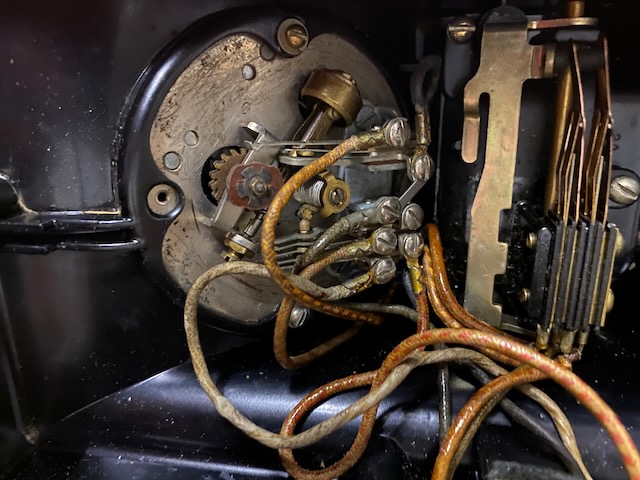
The handset and the capsules correspond to the civilian version.
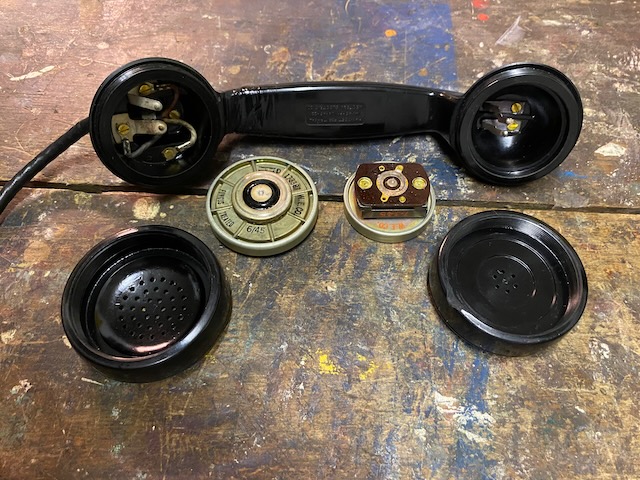
Handset marked as TP-6-A handset.
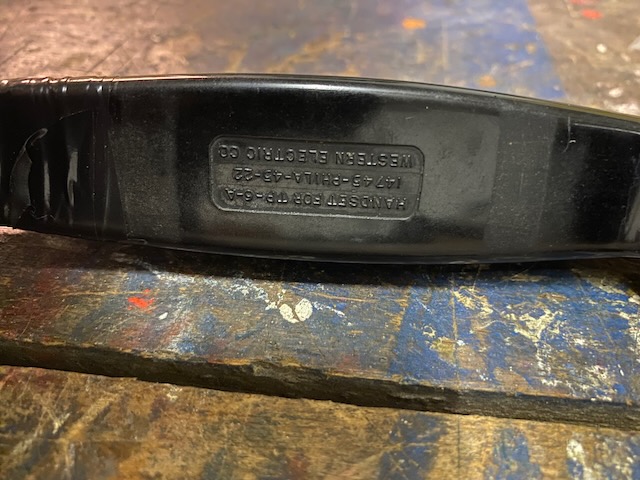
The wiring diagram (is stored under the capacitor bracket).
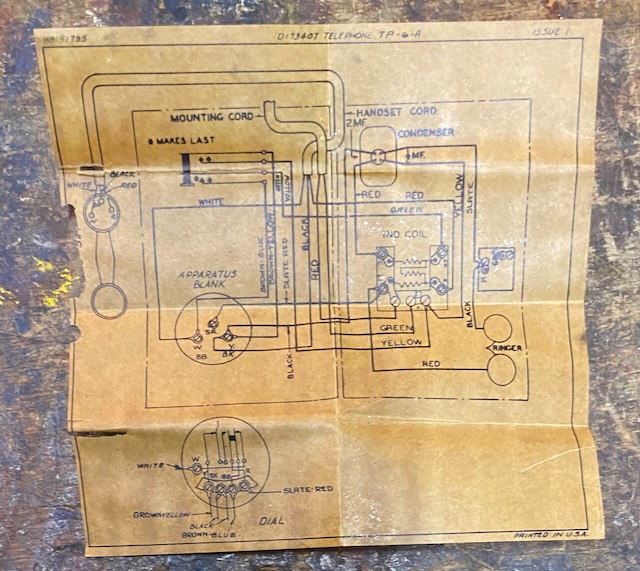
WE TP-6-A.
(Unfortunately the handset is broken near the TX side and had to be fixed)
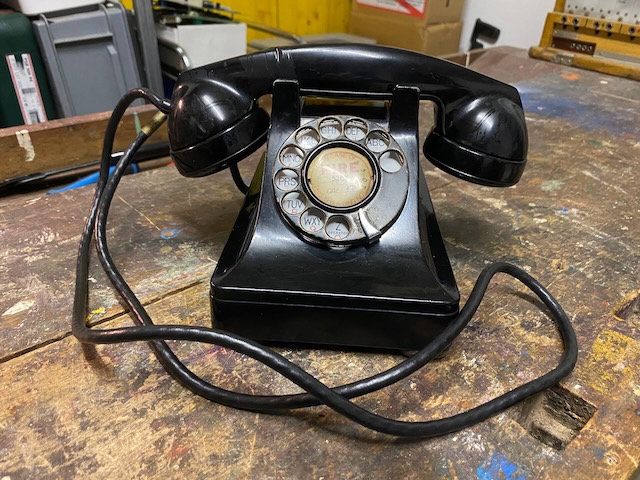
WE TP-6-A back.
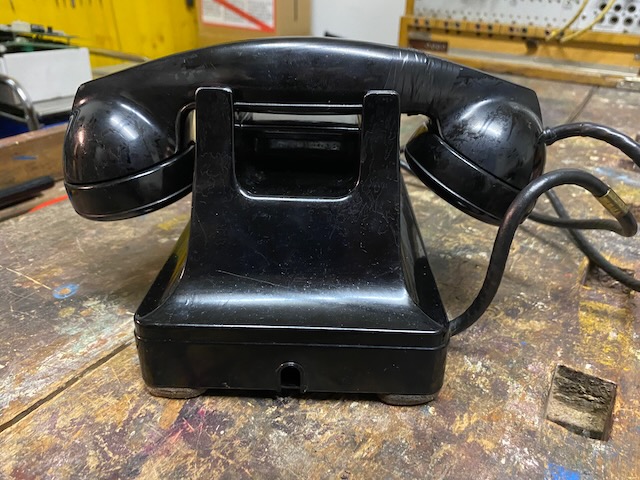
WE TP-6-A bottom.

Left the WE TP-6-A, on the right a normal WE 302 (also with metal shell, 1942).
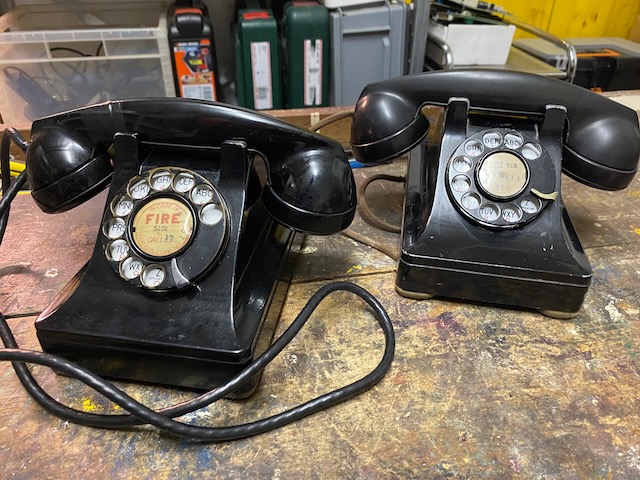
The TP-6-A beneath the normal WE 302.
The TP-6-A is closed with 4 screws whereas the normal WE 302 with only 2 screws.
Ringer and coil are the saem, but the TP-6-A capacitor is bigger than the normal WE 302 capacitor (Electrically they are the same and contain a 2uF and a 0.5uF capacitor).
The WE 302 has a WE 5H dial.
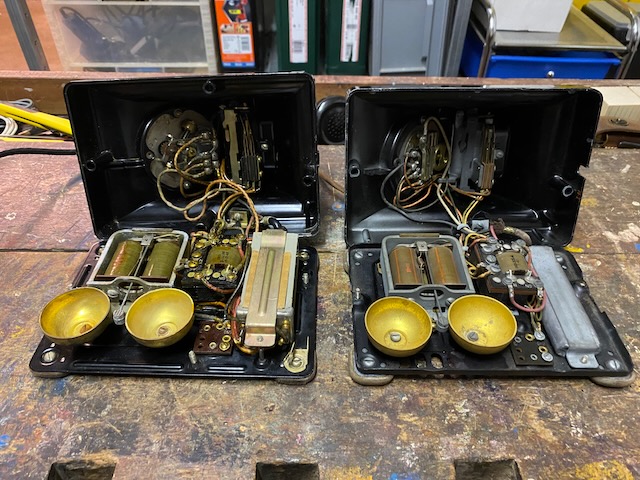
The Connecticut T. & E. TP-6-A 1948, open.
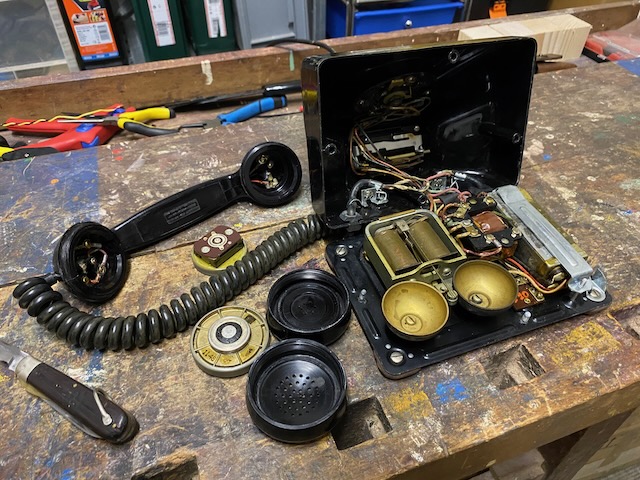
With a TA-45B/GT dial.
This is not a AE type dial, it uses rather a mechanism similar to a BTMC dial.
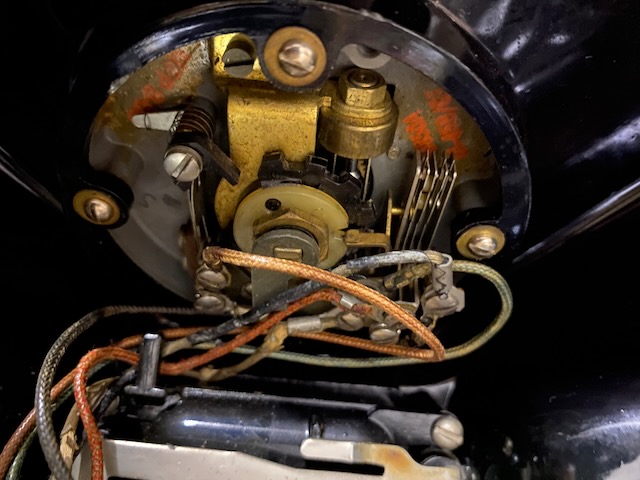
The handset is very similar to the WE F handset form.
It uses the same capsule types (but also made by Connecticut).

Handset marked as TP-6-A handset.

Connecticut TP-6-A bottom with diagram and M.F.P. treatment and signal corps stamps.
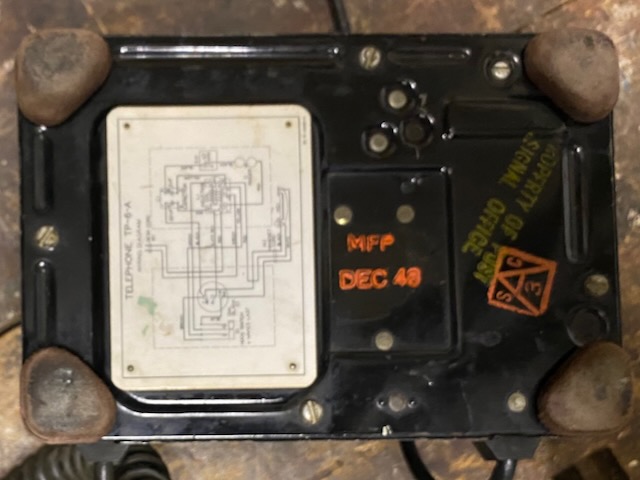
Connecticut TP-6-A wiring diagram.
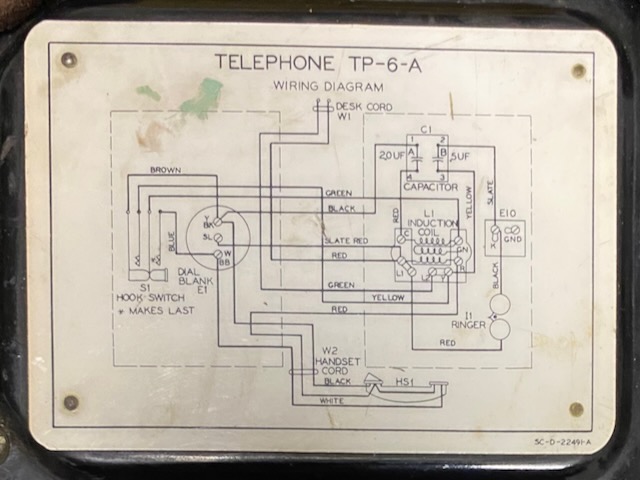
The Connecticut TP-6-A 1946 from the front.
It is a cast metal shell.
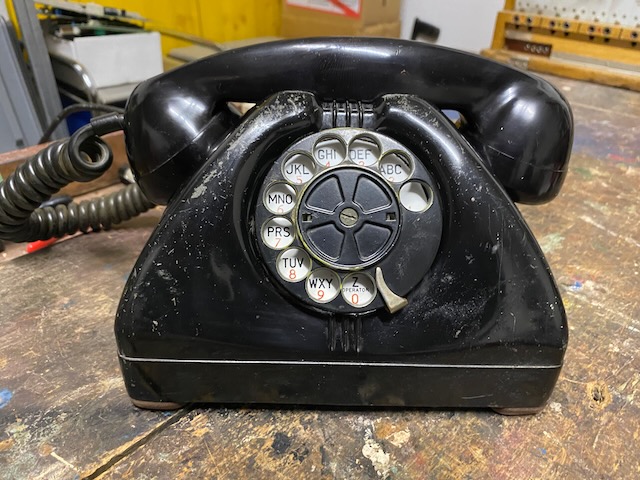
And from the back.
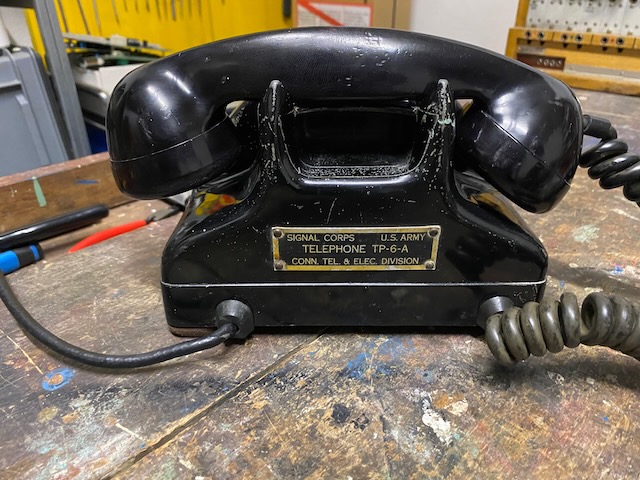
Another Connectircut T. & E. TP-6-A, this one from 1951.
The material which covers the base inside seems to be the M.F.P. proofing.
This one has a AE type dial.
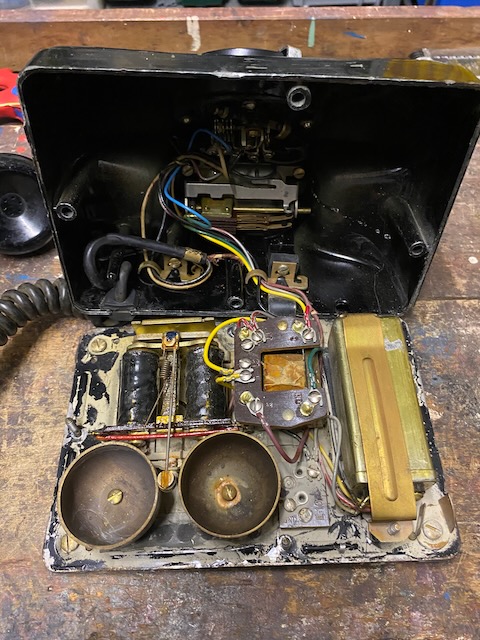
Handset marked as TP-6-A handset.
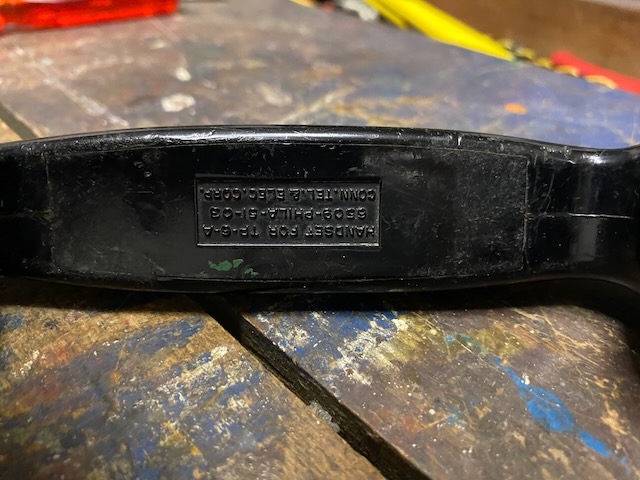
The Connecticut TP-6-A 1951 from the front.
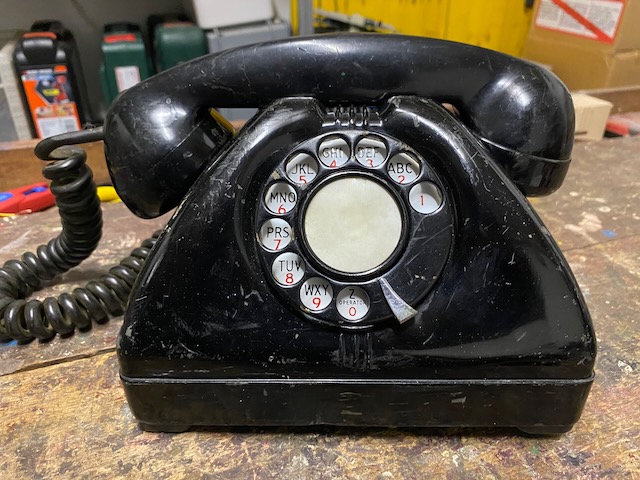
And from the back.
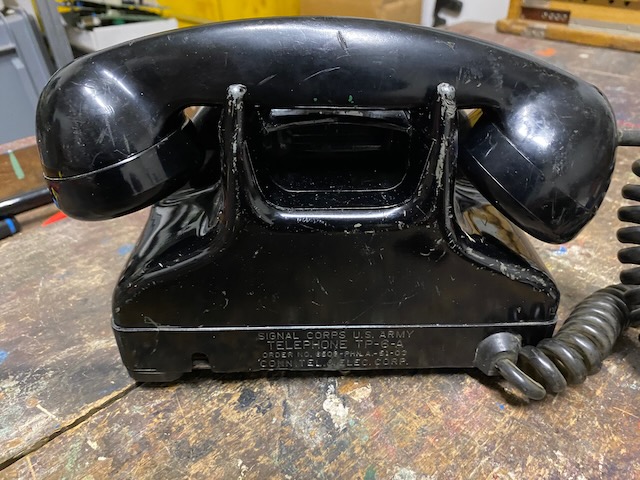
This one has the type details engraved on the back.
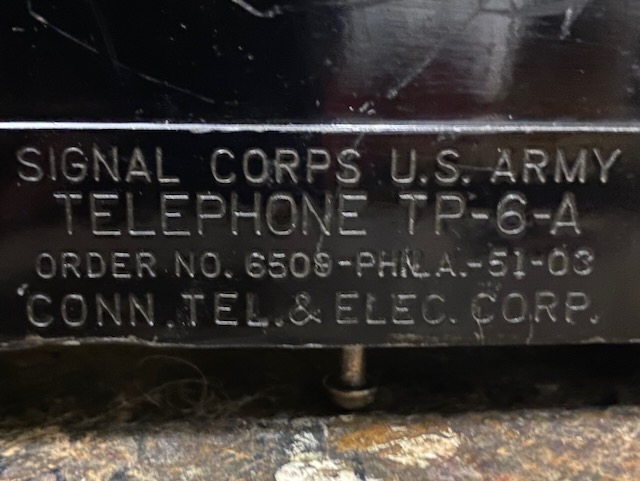
Bottom with diagram and M.F.P. treatment and signal corps stamps.
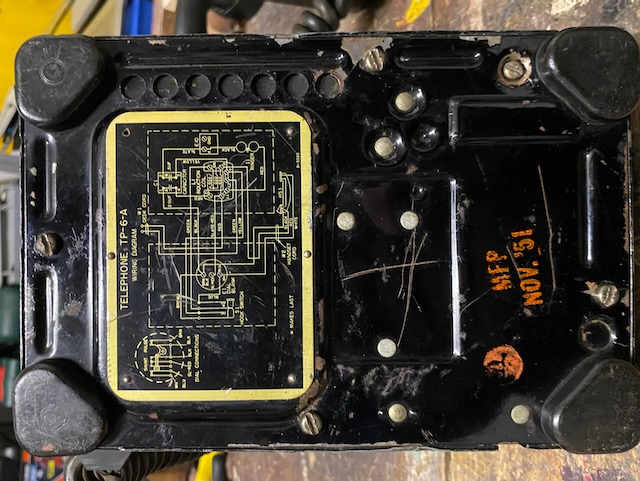
Connecticut TP-6-A 1951 wiring diagram.
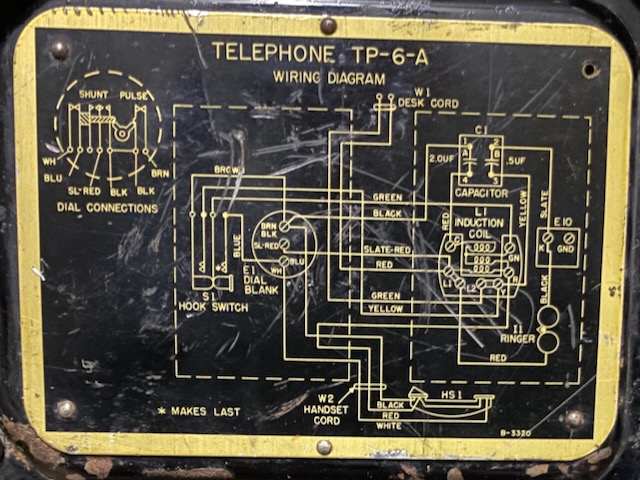
Both Connecticut TP-6-A from the front.
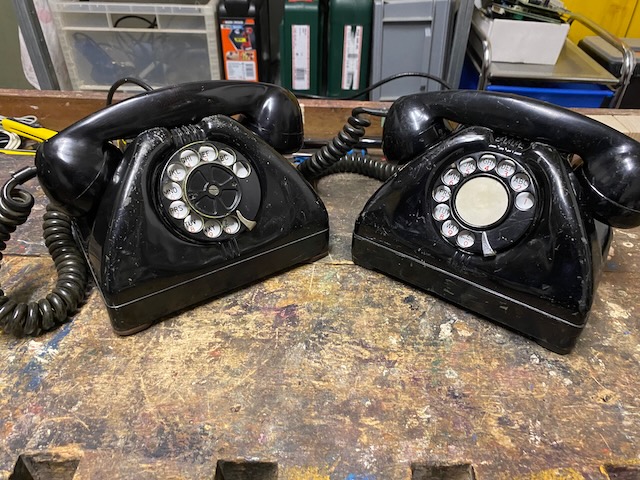
Both Connecticut TP-6-A from the back.
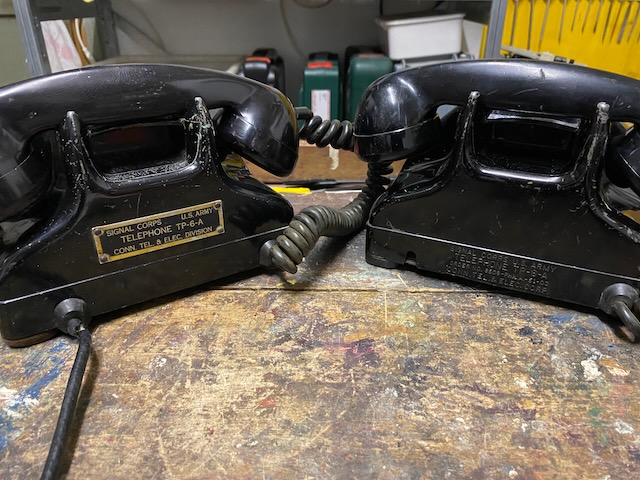
The North Electric TP-6-A 1951, open.
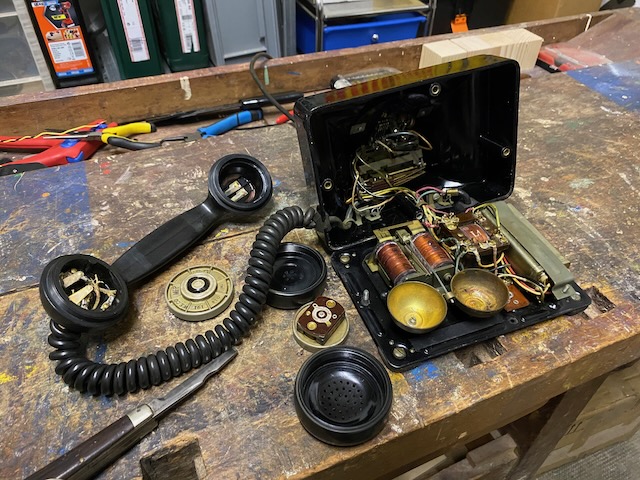
Dial TA-45C/GT, same mechanism as an AE dial.
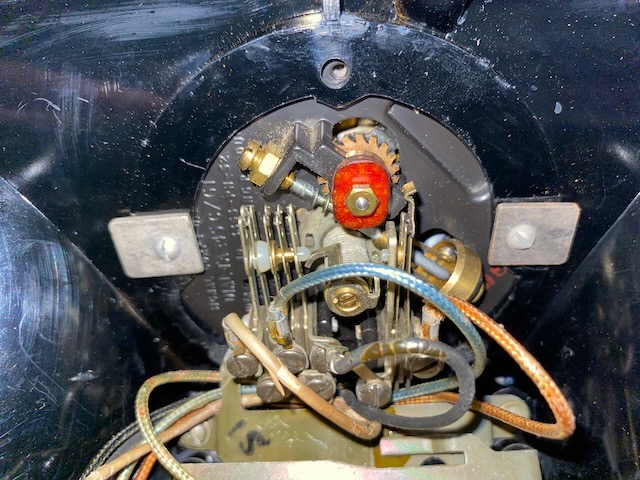
North specific handset, but using standard WE capsules.
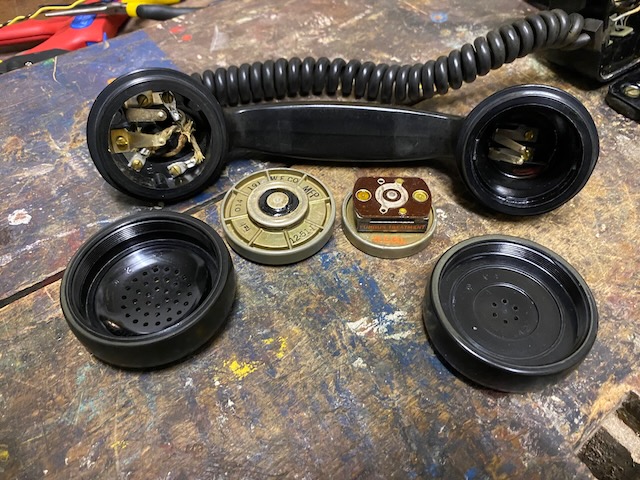
North bottom, 2 screws are missing.
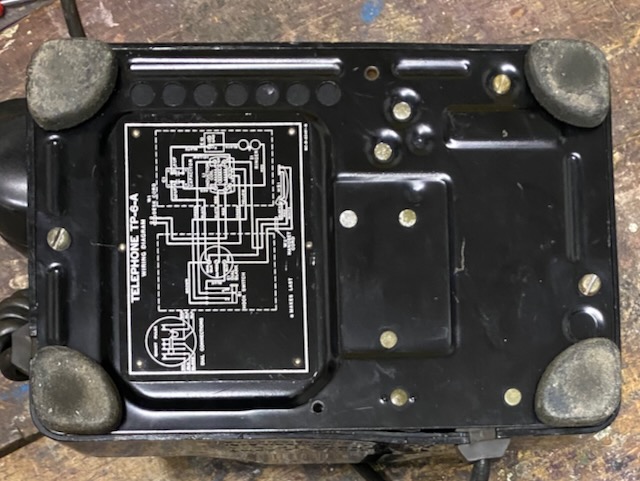
North diagram.
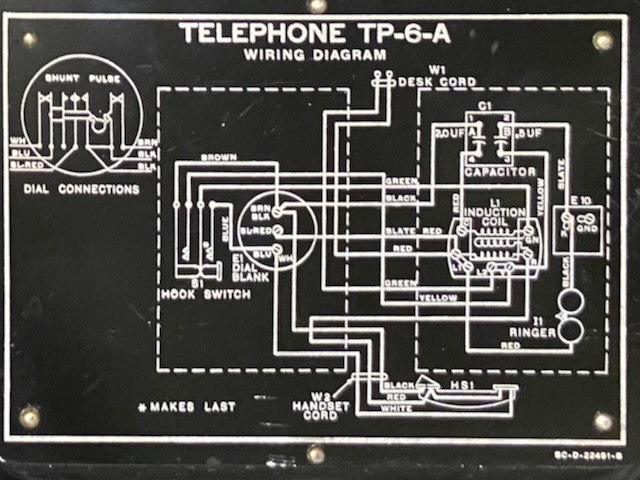
North Electric TP-6-A front, it is a plastic shell.
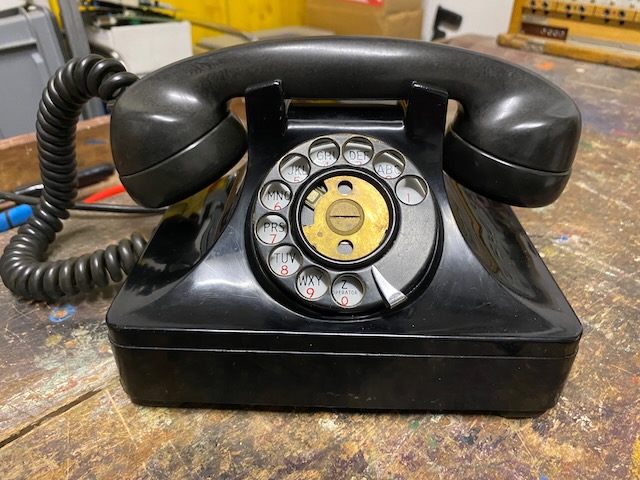
North Electric TP-6-A back.
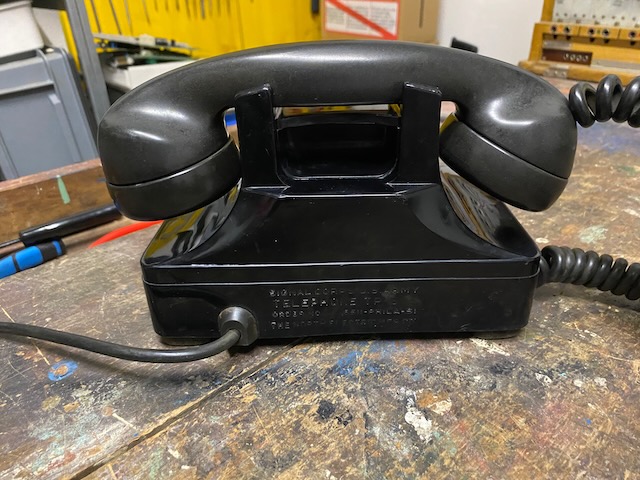
Type details engraved on the back.
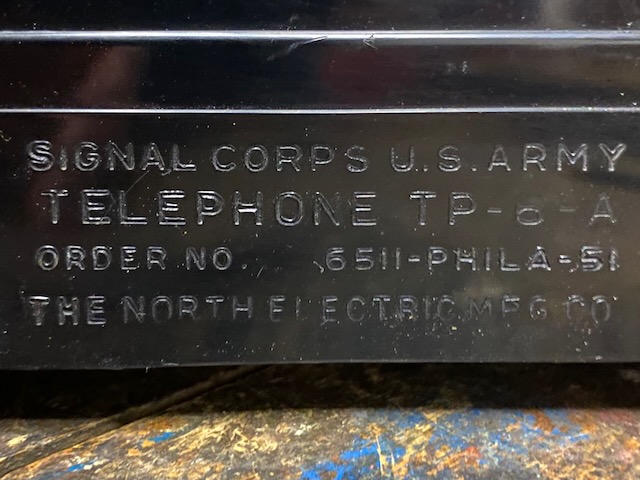
A civilian North desk set from 1940 (metal shell) and the North TP-6-A.

The civilian North base layout is different, it uses another ringer, and on this one a North dial (often North used AE dials on it's phones).
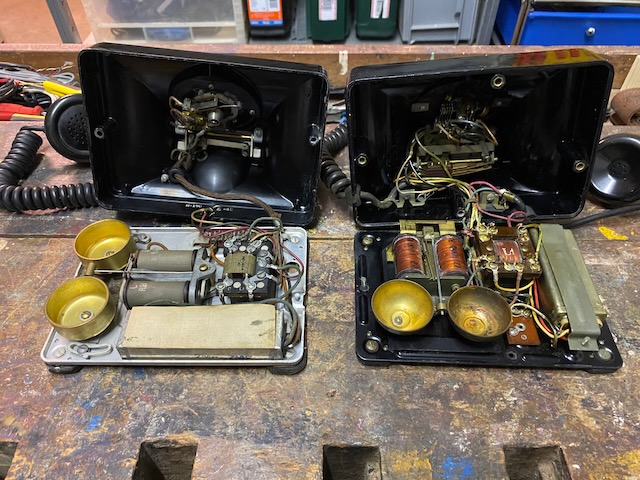
Civilian North diagram.
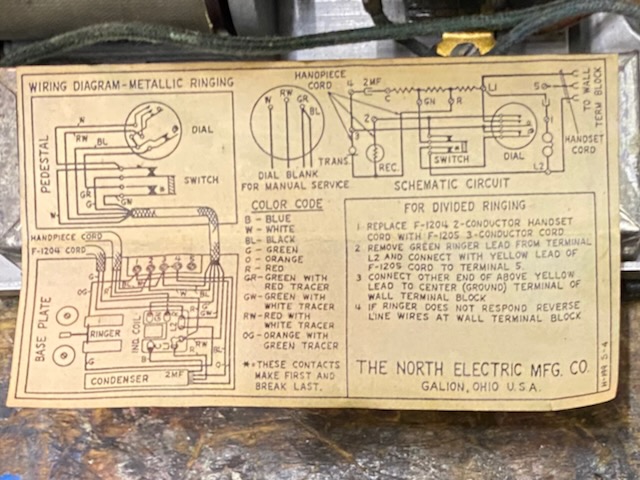
The TA-236/FT open.
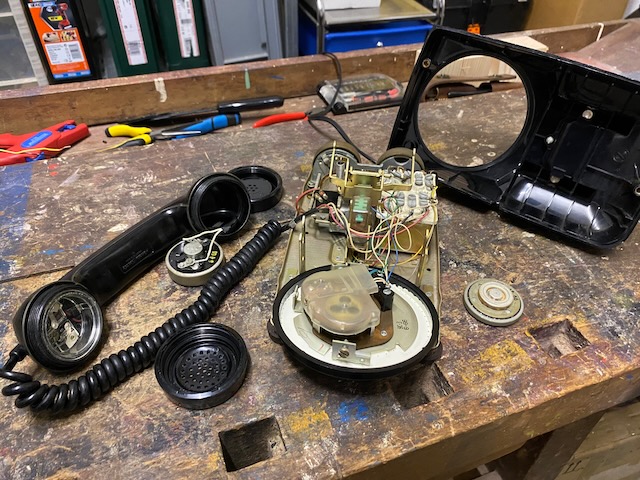
WE 9C dial with color code -3 (= black) [20].
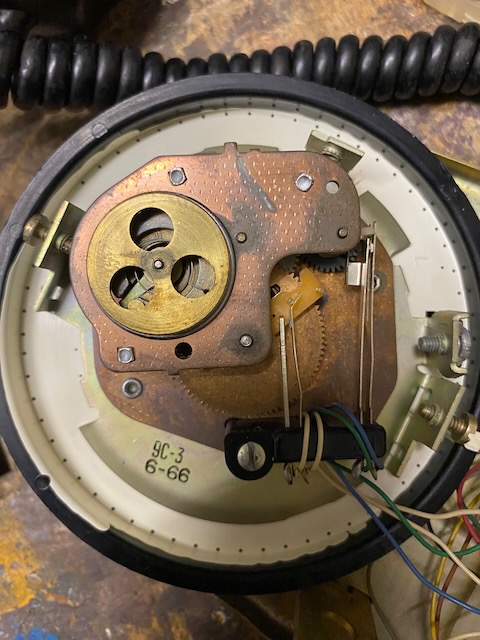
425E network, the standard network for rotary dial sets of that era (replaced the older 425B type) [20].
The WE 500 "network" module contains the ringing circuit capacitor, the anti-sidetone and radio interference filter setup with the respective coils, resistors, capacitors and varistors.
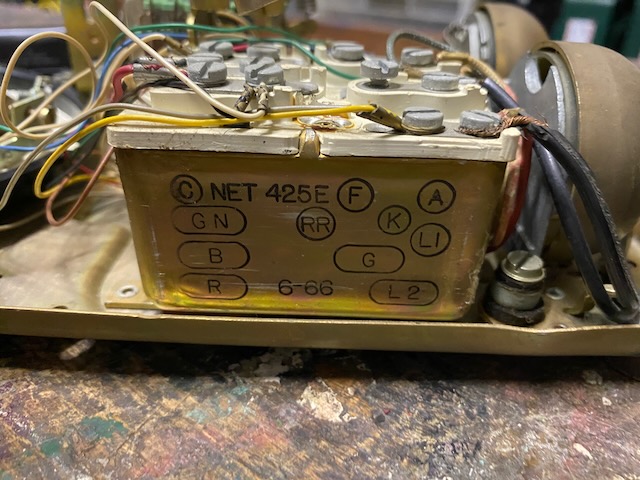
Standard civil type handset G1 with T1 transmitter and U1 receiver [20].
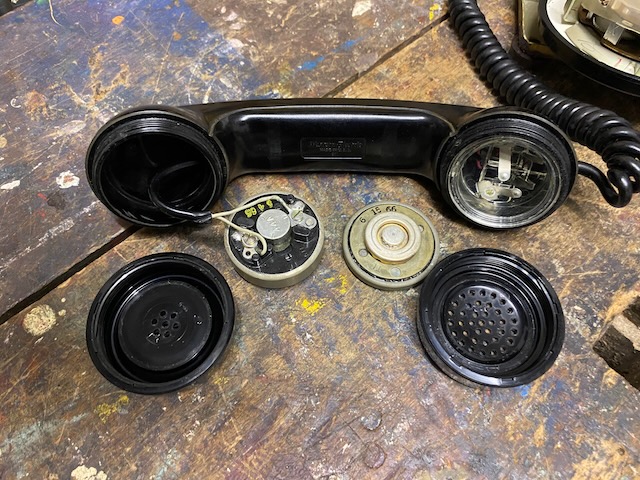
Bottom, made in 1966, adjustable ringer volume (as on any standard WE 500 set).
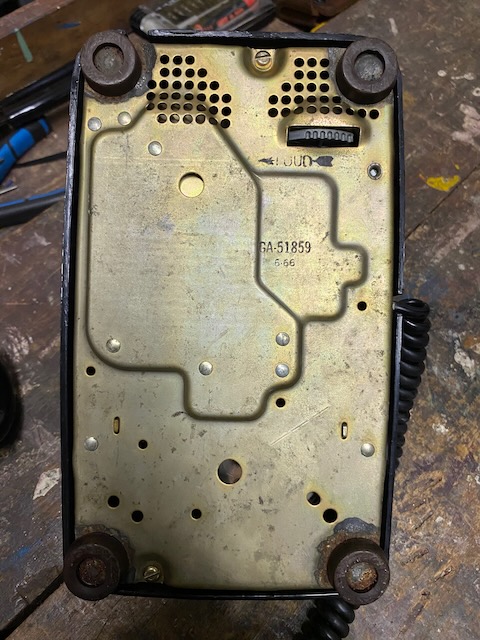
Front, plastic shell, plastic finger wheel.
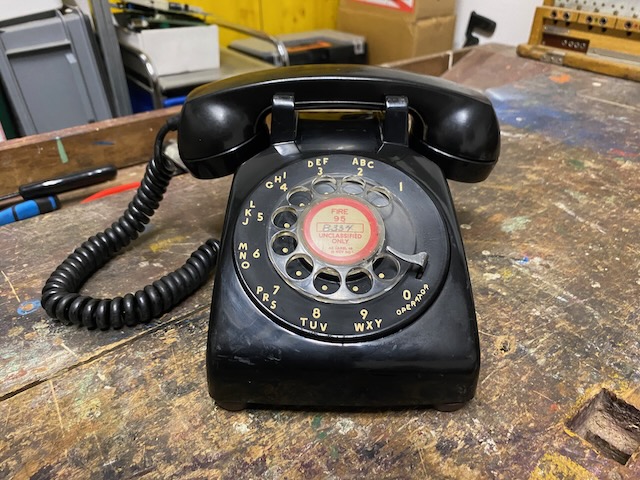
Back.
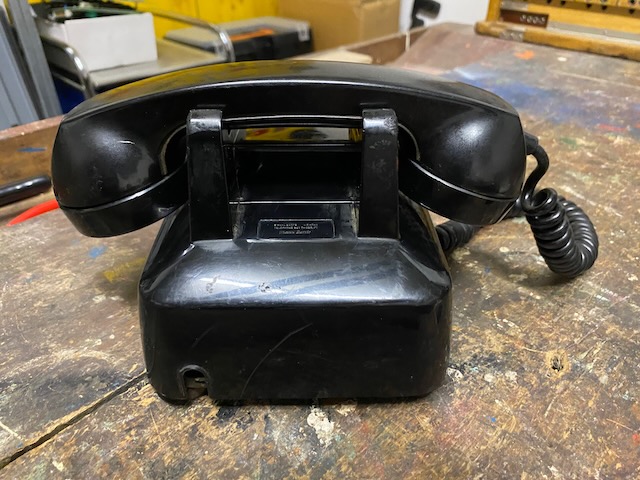
On the shell it is indicated that this set is Signal Corps specific type TA-236/FT, all the rest is identical to any WE 500.
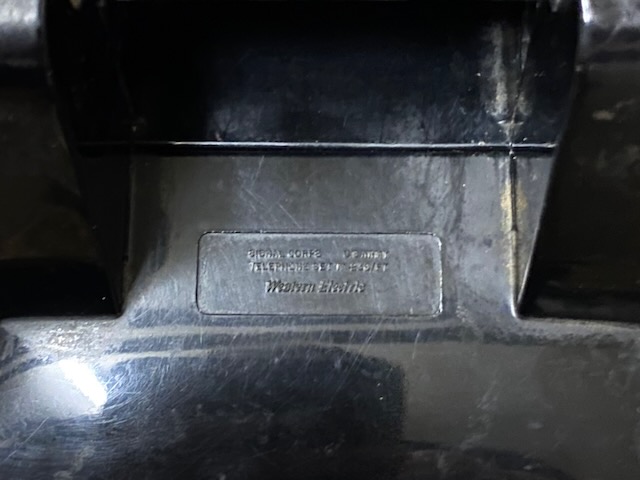
Creative Commons Attribution-ShareAlike 4.0 International License